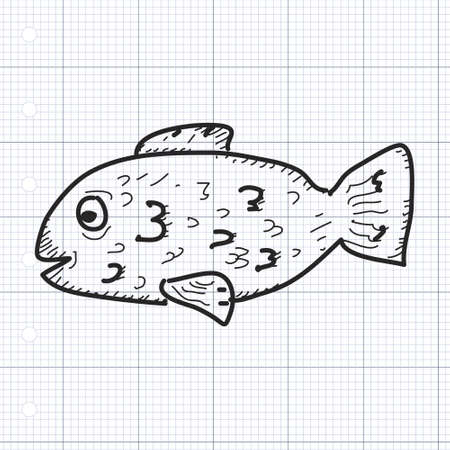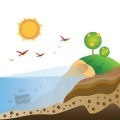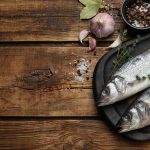Understanding Bass Behavior and Seasonal Patterns
To locate bass quickly in lakes, rivers, and reservoirs, the first thing you need to understand is how bass behave throughout the year. Their movement and feeding habits change with the seasons, water temperature, and spawning cycles. By learning these patterns, youll know where to look and what techniques to use no matter the time of year.
Spring: Spawning Season
As water temperatures rise into the mid-50s to low 70s (°F), bass begin moving from deeper winter areas into shallow flats and coves to spawn. During this time, they’re more aggressive and easier to locate in predictable spots like sandy or gravel-bottomed bays near cover.
Where to Find Them:
- Shallow flats near deeper water access
- Coves protected from wind
- Near submerged wood or vegetation
Best Lures:
- Soft plastic creature baits
- Senkos or stickbaits
- Spinnerbaits near cover
Summer: Post-Spawn & Heat Patterns
Once spawning ends and water temperatures climb above 75°F, bass often move deeper during the day to find cooler, oxygen-rich water. Early morning and late evening are prime times for topwater action as they move shallow to feed.
Typical Locations:
| Time of Day | Bass Location |
|---|---|
| Early Morning / Late Evening | Shallow flats, weed edges, docks |
| Midday (Hot Temps) | Main lake points, drop-offs, ledges, deep brush piles |
Best Lures:
- Topwater frogs or walking baits (morning/evening)
- Deep-diving crankbaits or jigs (midday)
- Carolina rigs along ledges
Fall: Feeding Frenzy Before Winter
Bass get active again as temperatures cool down into the 60s. They chase baitfish into creeks and shallows, fattening up before winter. This is a great time to cover water quickly and find schooling fish.
Go-To Spots:
- Mouths of creeks and backwater channels
- Wind-blown banks where baitfish gather
- Sparse grass lines near open water
Lure Tips:
- Lipless crankbaits (burn through schools)
- Spoons for vertical jigging on bait balls
- Swimbaits mimicking shad or bluegill
Winter: Slow Down for Cold-Water Bass
Bass become lethargic when temps drop below 50°F. They move deep and suspend around structure like rock piles or submerged trees. Its all about finesse presentations now.
Bass Behavior in Winter:
| Condition | Bass Activity Level | Recommended Technique |
|---|---|---|
| Water below 50°F | Lethargic, slow-moving | Ned rigs, drop shots, blade baits worked slowly near bottom structure |
| Sunny afternoons (slight warm-up) | Slight increase in activity in shallower structure-facing sun | Suspend jerkbaits or finesse jigs along rocky banks or timber edges |
The more you understand how seasonal changes affect bass behavior, the better your chances of finding them fast—whether youre fishing a clear highland reservoir, a muddy river system, or a natural lake filled with vegetation.
2. Reading Lake Structure: Points, Ledges, and Drop-offs
When it comes to finding bass fast in lakes, understanding underwater structure is key. Bass are ambush predators, and they love to hang out around changes in depth and contour where they can hide and strike at passing baitfish. Three of the most productive lake features you should focus on are points, ledges, and drop-offs.
Using Topographic Maps and Electronics
Topographic maps and fish finders (sonar) are essential tools for breaking down a lake quickly. These tools show you the layout of the lake bottom — think of it like reading a map of a mountain range, only underwater. Look for areas where depth changes quickly or gradually tapers off; these spots often hold bass.
Main Lake Points
A point is an area where land juts out into the water before dropping off into deeper depths. Bass use these as highways during seasonal transitions or as feeding stations during low light hours. Use your electronics to scan for baitfish activity along the edges of points.
Ledges
Ledges are underwater “cliffs” or sudden drops that often form along old river channels or creek beds submerged by reservoirs. These are prime bass hangouts, especially in warmer months when fish move deeper. With your sonar, look for bait clusters hanging near these ledges — chances are bass are nearby.
Drop-offs
Drop-offs are similar to ledges but can be more gradual. They’re areas where the bottom slopes from shallow to deep water. These zones allow bass to move up and down the water column easily depending on conditions like temperature, oxygen levels, and prey location.
Quick Reference Table
| Structure Type | Description | Why Bass Like It | Best Tools to Use |
|---|---|---|---|
| Main Lake Point | A finger of land extending into deeper water | Bass use them for ambush and movement routes | Topo maps, sonar with side imaging |
| Ledge | A steep underwater drop along an old channel | Bass stack here near baitfish in summer/fall | Down imaging sonar, GPS mapping |
| Drop-off | A gradual slope from shallow to deep water | Bass can adjust depth easily with changing conditions | Topo maps, 2D sonar view |
Tips for Success
- If youre fishing a new lake, start by scanning main lake points early in the morning or late afternoon.
- Use a jig or crankbait to probe ledges — feel for that sharp edge where depth drops suddenly.
- Watch your electronics closely for arches (representing fish) stacked along drop-offs.
The better you get at identifying these underwater structures with your electronics and maps, the faster youll find active bass no matter the season or lake size.
![]()
3. Decoding River Currents to Find Active Bass
Fishing rivers for bass is all about understanding how current shapes fish behavior. Unlike lakes or reservoirs, river bass are constantly dealing with moving water, which means they seek out places where they can rest while still having access to food. Once you understand how current works, you’ll be able to pinpoint the high-percentage spots where bass like to hang out.
How Current Affects Bass Positioning
Bass are energy-efficient predators. In rivers, they position themselves out of the main current and wait for baitfish or other prey to come drifting by. They want easy meals without spending a lot of energy swimming against the flow. That’s why areas with reduced current—like eddies, seams, and current breaks—are prime holding spots.
Key River Features to Target
Understanding these common river features will help you locate active bass faster:
| Feature | Description | Why Bass Like It |
|---|---|---|
| Eddies | Circular currents that form behind obstructions like rocks or logs | Create calm water zones where bass can ambush prey drifting by |
| Seams | The line between fast-moving water and slower water | Bass hold along seams to intercept food without fighting heavy current |
| Current Breaks | Any structure that disrupts flow—boulders, bridge pilings, submerged trees | Provide cover and a resting place from the main current |
Pro Tip:
If youre fishing from a boat, use your trolling motor to stay just outside the fast current and cast upstream into eddies or along seams. Let your bait naturally drift into the strike zone.
Lure Presentation in Moving Water
Your presentation matters just as much as location. In rivers, it’s best to let your lure move with the flow rather than against it. Natural movement looks more realistic and increases your chances of getting bit.
- Craw-style jigs: Drag them slowly near rocks and breaks.
- Crankbaits: Cast upstream and retrieve with the current for a natural look.
- Senkos or soft plastics: Let them drift weightless through eddies and seams.
Troubleshooting Tip:
If you’re not getting bites in obvious spots, try downsizing your bait or switching colors to better match local forage in the river system.
4. Navigating Reservoirs and Targeting Transition Zones
Fishing large reservoirs can feel overwhelming, but once you know what to look for, they become much easier to break down. Bass in reservoirs follow predictable patterns based on structure, water levels, and seasonal movements. To find bass fast, focus your attention on three key areas: creek arms, submerged channels, and transition zones.
Understanding Key Reservoir Features
Reservoirs are man-made lakes with a mix of natural and artificial structure. Unlike natural lakes, they often have steep banks near the dam and flatter terrain near the upper ends. Heres a quick breakdown of where to start:
| Feature | Why It Matters |
|---|---|
| Creek Arms | Bass use these as highways during seasonal migrations. Look for baitfish activity and shallow cover. |
| Submerged Channels | Old riverbeds and creek channels provide deeper travel routes and ambush points for bass. |
| Transition Zones | Where bottom composition or depth changes—bass hold here when moving between feeding and staging areas. |
How to Fish Creek Arms Effectively
Start by heading into major creek arms that feed into the main lake. These areas warm up faster in spring and attract both baitfish and bass. Focus on secondary points inside the creek arms, especially those with wood cover or chunk rock. Use crankbaits or spinnerbaits to cover water quickly and locate active fish.
Tactics for Submerged Channels
If the water is clearer or youre fishing deeper in summer or winter, submerged channels are key. These old creek beds are underwater highways that bass use year-round. Look for channel swings where the channel hugs close to a bank—these create prime ambush spots. Use jigs or Carolina rigs to probe these deeper structures.
Targeting Transition Zones
One of the most overlooked yet productive areas in a reservoir is where two types of bottom come together—like rock to sand or mud to gravel—or where the depth changes gradually (flats dropping into deeper water). These transition zones act like rest stops for bass as they move from deep staging areas to shallow feeding flats. A Texas-rigged worm or mid-depth crankbait can be deadly here.
Pro Tip:
Use your electronics to map out contour changes and locate submerged roadbeds or brush piles near transition zones. Bass love relating to these subtle features, especially during post-spawn and summer months.
The next time you hit a big reservoir, don’t try to fish it all—zero in on creek arms, submerged channels, and transition zones. By understanding how bass use these structures throughout the year, youll spend less time searching and more time catching.
5. Using Water Clarity, Wind, and Weather to Your Advantage
When it comes to finding bass quickly in lakes, rivers, and reservoirs, understanding how to read environmental cues like water clarity, wind direction, and weather conditions can make all the difference. These natural factors affect how bass behave—and knowing how to adapt your strategy accordingly will help you fish smarter, not harder.
Water Clarity: See What the Bass See
Bass are visual predators, so water clarity plays a big role in how they hunt. Clear water usually means bass rely more on sight, while muddy or stained water forces them to use their lateral line to feel vibrations. Heres a quick guide:
| Water Clarity | Bass Behavior | Best Lure Choice | Recommended Presentation |
|---|---|---|---|
| Clear (4+ ft visibility) | Wary and selective | Natural-colored finesse baits | Slow and subtle |
| Stained (1-4 ft visibility) | Moderately aggressive | Chartreuse or darker lures | Steady retrieve with some action |
| Muddy (<1 ft visibility) | Rely on vibration and sound | Loud crankbaits or jigs with rattles | Aggressive and close-range |
Wind Direction: Let It Work for You
Wind stirs up the surface and oxygenates the water, pushing baitfish toward windblown banks—where bass will follow. A strong breeze can create prime feeding zones.
Tips for Fishing in Wind:
- Focus on wind-blown points, coves, and shorelines—these are high-activity areas.
- If casting is tough due to wind, try moving with the wind and casting ahead of your drift.
- Bass often position facing into the current caused by wind—cast from behind when possible.
Cloud Cover: Light Levels Matter
The amount of sunlight changes how bass behave. On bright days, they may hold tight to cover or go deeper. On overcast days, they roam more freely looking for food.
| Weather Condition | Bass Behavior | Best Strategy |
|---|---|---|
| Sunny & calm | Tight to structure or deep cover | Target docks, laydowns, ledges with slow baits |
| Overcast or cloudy | Active and roaming in shallows | Use moving baits like spinnerbaits or chatterbaits in open flats or weed lines |
| Partly cloudy with light chop | Semi-active with increased ambush behavior | Mix between slow plastics near cover and fast-moving baits in open areas |
Barometric Pressure: The Invisible Factor That Matters Big Time
You can’t see it, but barometric pressure has a huge effect on bass behavior. Sudden pressure changes often trigger feeding frenzies—or complete shutdowns.
General Guide to Barometric Pressure:
| Pressure Trend | Bass Activity Level | Tactics That Work Best |
|---|---|---|
| Falling (before storm) | High activity; aggressive feeding | Cover water fast with crankbaits or topwater lures |
| Stable (fair weather) | Normal behavior; predictable patterns | Mix of power and finesse techniques depending on location |
| Rising (after front passes) | Slightly sluggish; less movement | Sloooow down with soft plastics near heavy cover |
| High & steady for long periods | Lethargic; tough bite | Dropshot rigs or jigs fished slowly in deep structure |
If you take time to understand what the water is telling you—whether its clear or muddy, calm or choppy—youll start seeing patterns that lead you right to where the bass are holding. Adapt your approach based on what nature gives you each day, and youll be reading the water like a pro in no time.


